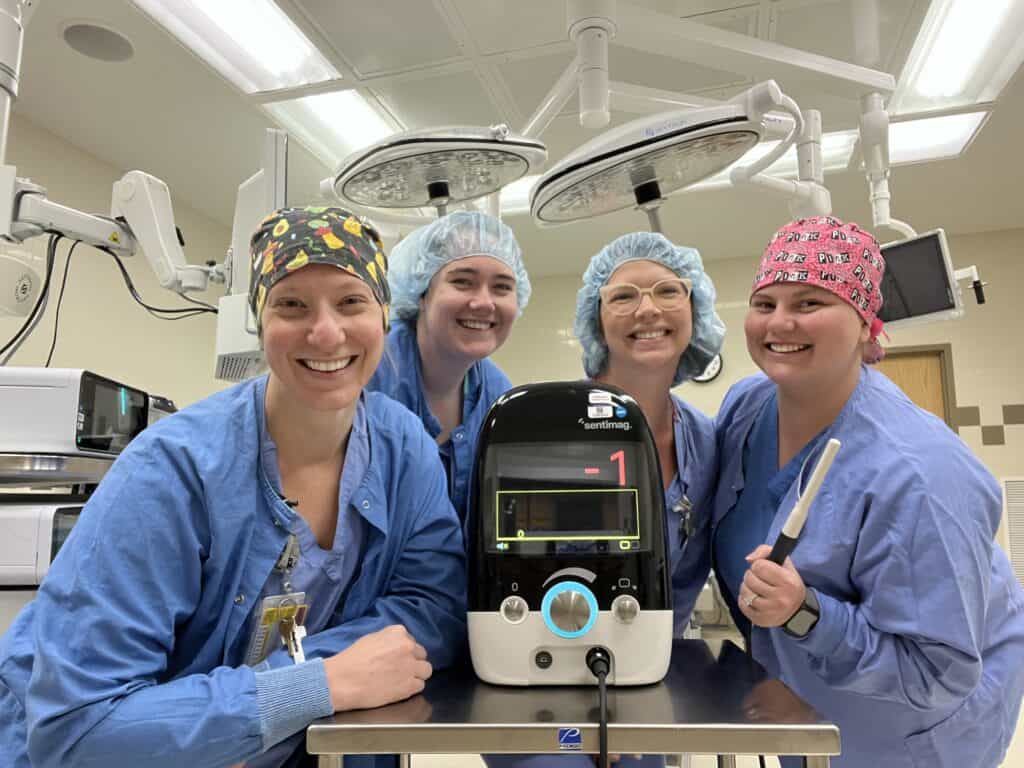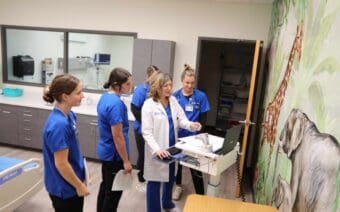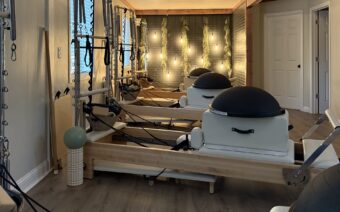
October 20, 2025
RIPON – After receiving a gift of more than $80,000 from its internal Agnesian HealthCare Foundation, Chief Surgeon Horace Lo said SSM Health Ripon Community Hospital (RCH) can now offer patients a new, cutting-edge method of tracing and marking breast cancer tumors.
Lo said, thanks to the introduction of new Sentimag® technology, breast cancer patients in the Ripon community now have access to a less harmful treatment method for detecting and locating cancerous lymph nodes.
Treatment progression
When surgically treating breast cancer, Lo said “it requires you to, oftentimes, not just remove the lump, but look at the lymph nodes that are in the armpit.”
“We think [of] the lymph nodes as [the] primary initial spread of cancer from the breast to the rest of the body, so recognizing the lymph node status… is really important as far as staging, prognostic purposes and treatment options,” he said.
Previously, Lo said methods of managing patients’ lymph nodes were removing “nearly all” of them – “whether they’re positive [or] negative” – leading to a fairly high incidence of irreversible arm swelling and discomfort.
“The lymph nodes [are] basically filters and help carry the fluid back from the extremities,” he said. “We’ve gone now to this method of sentinel lymph node biopsy – which is basically removing the first couple or three lymph nodes in the chain that drain the breast to figure out if those are positive.”
Depending on the biopsy’s outcome, Lo said treatment options for patients vary – but, regardless, the procedure helps save some patients from unnecessary lymph node removal.
However, Lo said that means medical professionals have to identify which lymph nodes are “the first few that drain the breast.”
“There are a couple dozen lymph nodes in the armpit on average,” he said. “So, you typically have to inject some sort of tracer to locate which ones those are.”
The Magtrace
Previously, at RCH, Lo said the team used a radiation-based injection – or a “radio tracer” – in conjunction with a blue dye to locate a patient’s “first few” lymph nodes.
However, he said this method was problematic for numerous reasons, leading the hospital to use its gift from Agnesian to procure new Sentimag technology that “uses iron oxide instead of a radio tracer.”
“The Magtrace® is the iron-oxide injectable that travels with the lymphatics from the breast into the lymph nodes,” he said.
This method, Lo said, offers “several advantages” over its radio counterpart – especially in easing the difficulty of scheduling an operation where, traditionally, a number of certified professionals are needed to inject a radiation-based tracer.
“This gets rid of all the logistics hurdles – the administrative problems, the dealing with radiation, the need for immediate use, the significant fore-planning – especially for smaller hospitals that don’t necessarily have access to these radio tracers immediately,” he said.
Another advantage to the Sentimag technology, Lo said, is how long the tracer remains active both on the shelf and in the patient.
“[The radio-tracer] didn’t last very long, so you had to have it shipped the day of [the procedure] to the location where you [were] going to use it, inject it and then deal with the radioactive waste,” he said.
The Magtrace, on the other hand, Lo said, can be injected at any time – “up to 90 days prior.”
“You can inject it during one of the initial clinic visits – it can sit there, and you don’t have to plan for all the other logistics to happen on the day of surgery, if it gets to that,” he said. “So, this new technology really reduces the roadblocks and hurdles that you have to go through as far as dealing with radiation in previous iterations of this surgery.”

The Magseed
Another aspect of RCH’s new Sentimag technology, Lo said, involves a different kind of cancerous tissue marker – also utilizing iron oxide over radiation – called the Magseed.
A couple decades ago, Lo said marking cancerous tissue involved a procedure in which a radiologist would insert a wire through the patient’s skin and “against the lesion we wanted to cut out.”
“That was problematic for a number of different reasons [because], again, you needed a radiologist on site and… you needed somebody who is comfortable doing those procedures to put the wire in,” he said.
Through the years, Lo said the wire was replaced with an RFID capsule – but that method required a new machine to read its signal.
“With this gift from the Agnesian Foundation, the Magtrace – the finding of the lymph nodes – and the Magseed [implantation] can be done with the same machine,” he said. “We can do the lymph nodes and the primary lumpectomy with the same machine and using the same magnetic technology rather than RFID or radiation.”
Lo said the Magseed is “placed either on top of, next to or within the tumor,” and – using the Sentimag probe – allows medical professionals to locate exactly where it is and remove it with the tissue.
“The probe is the thing you use to find where this little, magnetic capsule – [the Magseed] – is,” he said. “[The Sentimag probe will] tell you the distance from the capsule, [and] as long as you know where the capsule is seeded next to the tumor, you can follow it down and then start cutting around it.”
Lo said for him and his team, there wasn’t “a huge learning curve” when training on this new technology.
“[Magtrace] injections are just injections, [and] the [Magseed] capsule is much like the RFID capsules,” he said. “Getting used to the probe – its sensitivity, zeroing it out, that sort of stuff – that just takes… a little bit of experience and hands-on [learning]. But, it’s not necessarily dramatically different.”
Community health, appreciation
The key to catching breast cancer early, Lo said, is preventive care.
“Women should start screening at age 40 [via] mammograms,” he said. “Breast self-exams – there are pluses and minuses to them, so that’s up to the individual. But definitely start screening [and] get your yearly mammograms [because] then, the earlier we catch things, obviously, the much better things turn out to be.”
Prior to receiving Agnesian’s gift, Lo said there weren’t “a lot of breast cancer cases” treated at RCH.
“I’m not entirely sure why,” he said. “Breast cancer is the second most common cancer among women, so there’s a definite need in any region to cover breast cancer cases and deal with breast health.”
That is why Lo said prioritizing future-focused care is important – especially in less populated or rural areas.
“I think it’s great the [Agnesian HealthCare] Foundation and Ripon Hospital are being so progressive,” he said. “[That among] these small rural hospitals that are typically running into trouble across the nation, Ripon and SSM have decided to be so progressive and forward thinking by keeping this community-based hospital up and running and current with new technologies.”
Visit ssmhealth.com for more.
 Merchants Bank celebrates 150 years
Merchants Bank celebrates 150 years Waseda Farms: ‘Trust where your food comes from’
Waseda Farms: ‘Trust where your food comes from’








